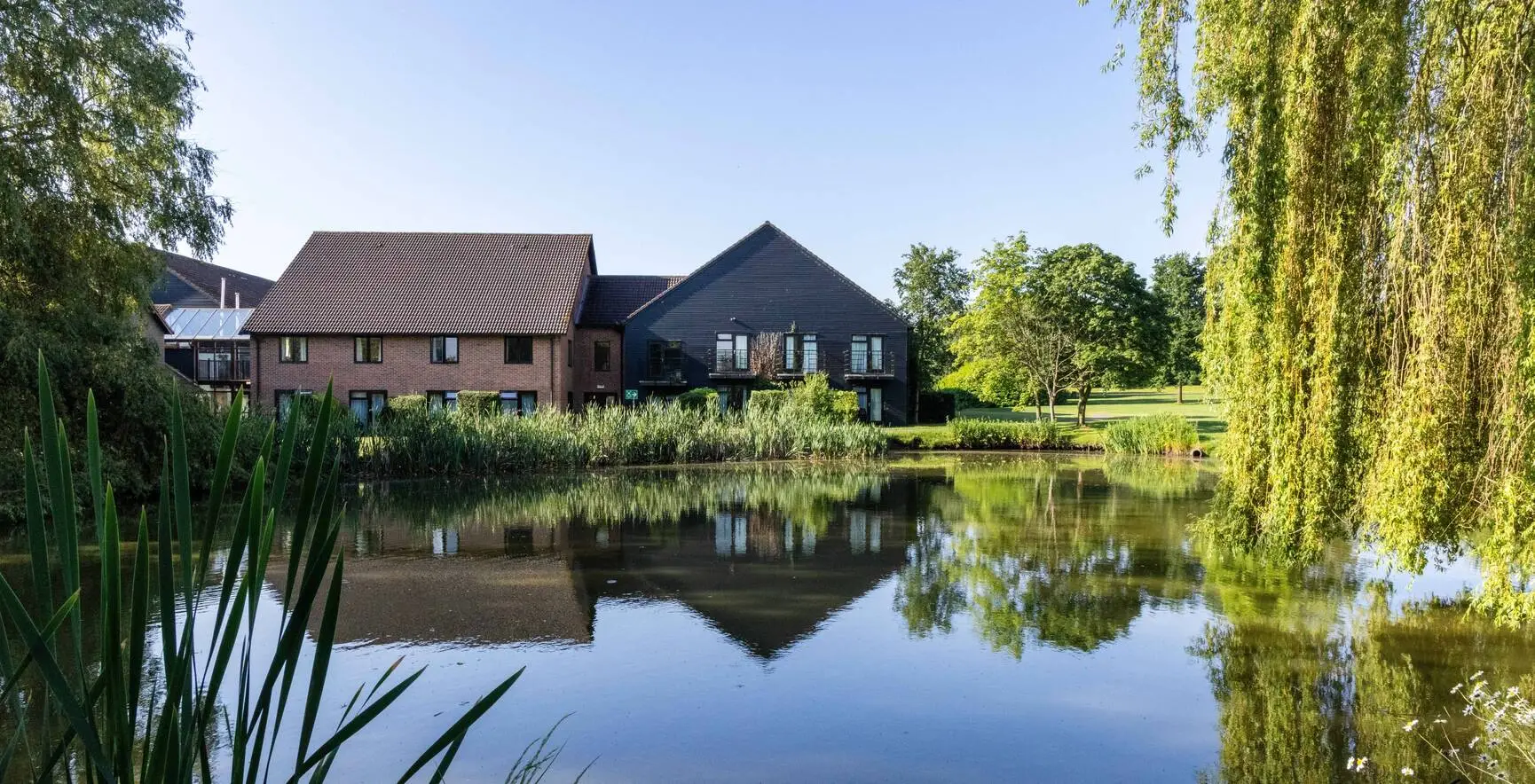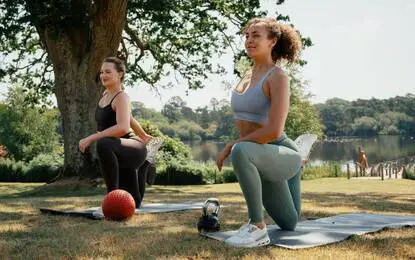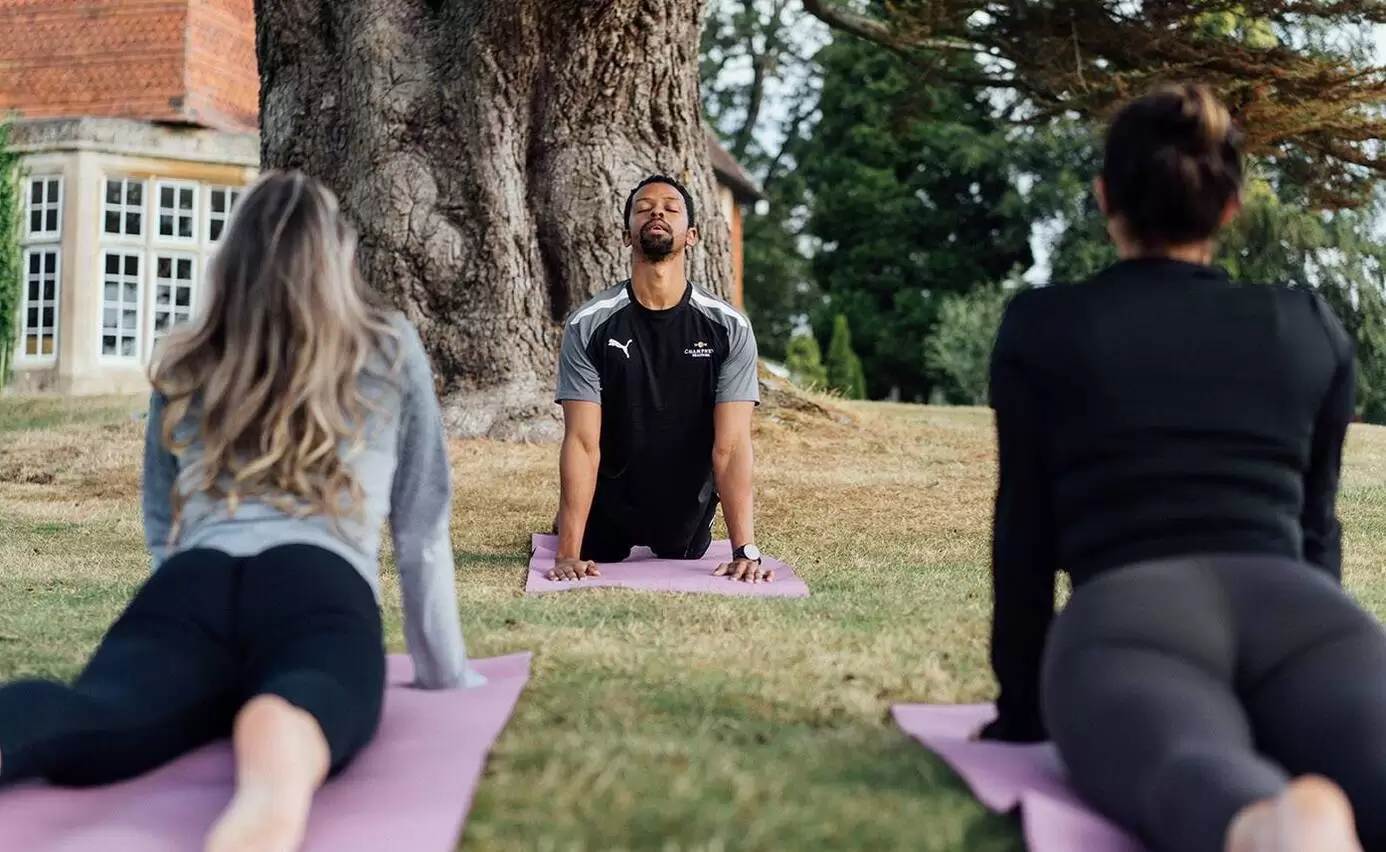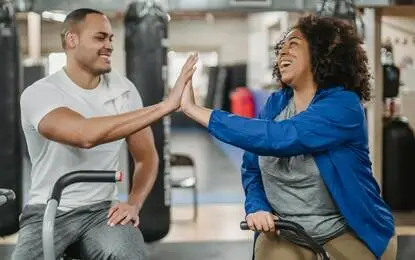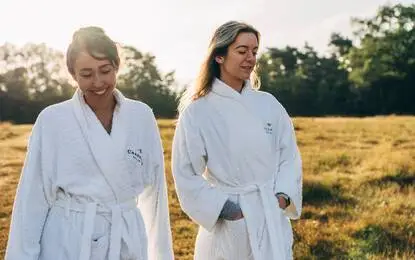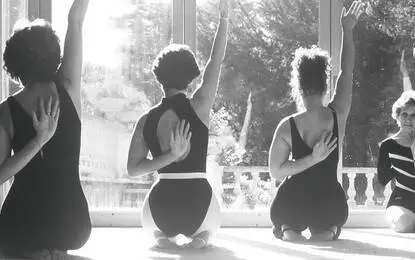by Gem Johnson, Menopause PT at Champneys
When I asked my mum recently to start doing 10 squats a day to support her strength and mobility, I was pleasantly surprised at how she took it on board without a single moan. To be fair, most people hate squats! After throwing a few figures at her over a coffee, such as ‘the risk of a hip fracture doubling every 10 years after age 50’ and the devastating consequences on quality of life, she’s banging out squats whenever she can (even in the lift).
My mum has always been active, a healthy prescription of walking, yoga and aqua aerobics keeps her fit and healthy, but as a personal trainer, I’ve grown increasingly concerned about her lack of strength training and lean muscle mass. Although I’ve been gently encouraging her to incorporate resistance training into her week, it’s not that easy for someone to just start if they’ve never lifted weights before. I see it often at work, how daunting it can be for someone who has lost body confidence and feels embarrassed to go into the gym environment or just too nervous about lifting weights as they are scared they’ll do it wrong or injure themselves. So we started nice and simple and reframed the challenge with just 10 body weight squats per day and not a kettlebell or dumbbell in sight.
I had to chuckle because not long ago, she’d look horrified when I told her I’d done around 280 squats in a workday. But now she’s caught the bug and she’s starting to understand the power of feeling stronger. For me, the strength, grace and sense of empowerment that comes with strong glutes, stable legs and good posture is an incredible feeling.
If you’ve got weak glutes, then neighbouring muscles take over to get the task done, whether that’s sitting, standing, climbing stairs etc This creates muscle imbalances and compensation patterns that can cause tension, tightness, reduced mobility and pain.
I am so proud of my mum as she instantly recognised that it’s a small daily habit to build into her lifestyle with a big payoff. She already knew instinctively that keeping her legs, glutes, and core strong is one of the most important things she can do to stay mobile, independent, and well as she ages. I have no doubt she’ll be telling everyone and anyone that will listen how many squats she does in a day and showing them her new party trick.
How Do Squats Help as We Age?
As we head towards our seventh decade, the risk of frailty, balance issues and falls rises significantly, especially for women. Age-related muscle loss (sarcopenia) combined with menopausal hormonal changes leads to a decline in both muscle strength and bone density.
These changes put us at much higher risk of fragility fractures, especially in the hip, spine, and wrist. These fractures often result from a simple fall, what’s known as low-energy trauma and they are way more common than people realise.
In 2019, 3.77 million people in the UK were diagnosed with osteoporosis. Nearly 3 million were women, and that same year saw over 527,000 new fragility fractures. These aren’t just statistics, they’re real lives impacted by injury, loss of independence, and decline in health.
As mentioned earlier in the article, the risk of a hip fracture doubles every 10 years after age 50 and:
- Around 4% of people die during hip fracture surgery.
- 1 in 5 dies within a year due to complications like infections or immobility.
- Many never regain full mobility or return to independent living.
This is why I’m not waiting and neither should you if you have elderly parents or if you have a sedentary lifestyle. I’m giving my mum the tools now to feel stronger and to future-proof her body and reduce her fall risk.
Why Start with Just 10 Squats?
For anyone new to strength training, 10 squats a day is the perfect place to begin. It’s manageable, effective and builds consistency without being overwhelming. The goal is to build strength, stability and confidence, not intensity.
Working on the Foundations First
We focused on:
- Standing from a chair without using her hands.
- Hinging at the hips before bending the knees.
- Keeping her chest lifted and spine aligned.
- Moving slowly and with control to protect joints and support posture.
This one simple movement activates the glutes, quads, hamstrings and core — muscles that are essential for walking, stair-climbing, staying balanced, and standing tall. They’re also key to preventing the kind of falls that lead to fractures.
It’s About More Than Muscles
Daily squats offer a wide range of benefits:
- Improved balance and coordination.
- Increased joint mobility, even with arthritis.
- Lower blood sugar, especially if done after meals.
- A boost in confidence and body awareness.
And let’s not forget: lifting the bottom. Yes, the glutes sag with age but daily squats can help reclaim shape and strength with grace and sass.
What comes next?
If squats feel unfamiliar or if you’re recovering or managing joint issues, start small. Try standing up and sitting down from a dining chair without your hands. Do that once. Then again. Gradually work up to 10.
Once it becomes second nature, you can add other exercises to support posture, mobility, and strength.
This isn’t about starting a full fitness program, it’s about building a daily ritual that supports long-term well-being. You can add other stuff later on.
My goal is simple, to help my mum and clients stay strong, steady and self-reliant for as long as possible. It all starts with 10 squats a day.
It’s never too late to start getting stronger.
Email tringfitness@champneys.com for your FREE 10-Squats a Day Challenge.



